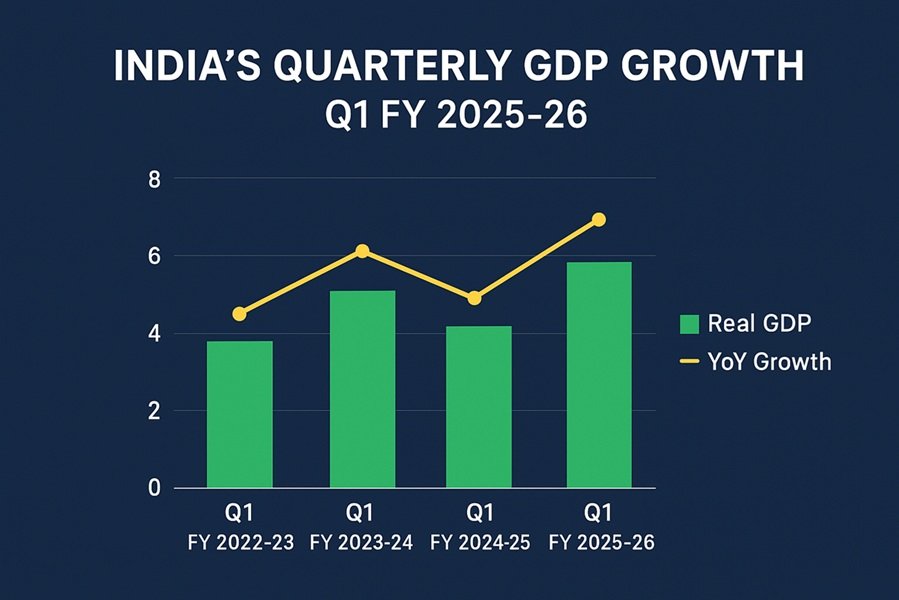
The Goods and Services Tax (GST) collections for March 2025 reflect significant trends in India’s economic activity, indicating robust growth in tax revenues. This article provides a comprehensive analysis of the gross and net GST collections, comparing them with previous years, assessing the growth trends, and understanding their implications for the economy.
Overview of GST Collections (March 2025)
According to the latest data, the total gross GST revenue for March 2025 stood at ₹1,96,141 crore, marking an increase from ₹1,78,484 crore in March 2024. This represents an increase of 9.9% year-on-year (YoY).
Breakdown of GST Revenues
The GST revenue is derived from two primary sources:
- Domestic GST Revenue
- GST Revenue from Imports
1. Domestic GST Collections
The domestic GST collections showed a steady increase in March 2025. The breakup of domestic revenue is as follows:
- Central GST (CGST): Increased from ₹34,532 crore in March 2024 to ₹38,145 crore in March 2025.
- State GST (SGST): Rose from ₹43,746 crore in March 2024 to ₹49,891 crore in March 2025.
- Integrated GST (IGST): Marginally increased from ₹47,625 crore in March 2024 to ₹50,071 crore in March 2025.
- Compensation Cess: A slight dip was observed from ₹11,263 crore in March 2024 to ₹11,116 crore in March 2025.
Total Domestic Revenue in March 2025 reached ₹1,49,222 crore, reflecting an 8.8% growth from March 2024.
2. GST Revenue from Imports
Import-based GST revenue also witnessed substantial growth, reflecting increased international trade activity:
- IGST on Imports: Increased from ₹40,322 crore to ₹45,782 crore.
- Import Cess: Marginal growth from ₹996 crore to ₹1,137 crore.
- Total GST from Imports: Increased from ₹41,318 crore to ₹46,919 crore, a YoY growth of 13.5%.
Total Gross GST Revenue
When combining domestic and import GST revenue, the total GST collection for March 2025 reached ₹1,96,141 crore, an increase of 9.9% compared to March 2024.
Yearly Growth Trends
For the entire fiscal year 2024-25, the GST collection has maintained a healthy growth trajectory:
- CGST collections grew from ₹3,75,710 crore in FY 2023-24 to ₹4,13,776 crore in FY 2024-25.
- SGST revenue increased from ₹4,71,195 crore to ₹5,16,448 crore.
- IGST collections rose from ₹5,43,704 crore to ₹6,03,582 crore.
- Cess collections saw an increase from ₹1,32,639 crore to ₹1,41,892 crore.
- Overall GST collection increased from ₹15,23,248 crore to ₹16,75,697 crore, a YoY growth of 10%.
Sector-Wise Impact and Trends
- Manufacturing and Retail: A rise in CGST and SGST collections indicates strong domestic production and retail demand.
- Imports and International Trade: Increased IGST on imports suggests higher foreign trade volumes.
- Small and Medium Enterprises (SMEs): Steady GST collection growth suggests improving compliance and business activity among SMEs.
Implications for the Economy
The robust GST collection figures reflect strong economic fundamentals, improved compliance, and steady business activity. The government’s measures to curb tax evasion and enhance digitization have also contributed to better collections.
Conclusion
The March 2025 GST collection report underscores India’s resilient economic growth, steady domestic demand, and rising trade activity. With GST revenues continuing to rise, the government is better positioned to meet its fiscal targets and drive further economic growth.
As we move ahead into FY 2025-26, maintaining high compliance rates and supporting business growth through policy measures will be crucial in sustaining this positive momentum.
Source: https://tutorial.gst.gov.in/downloads/news/approved_monthly_gst_data_for_publishing_mar_2025.pdf





